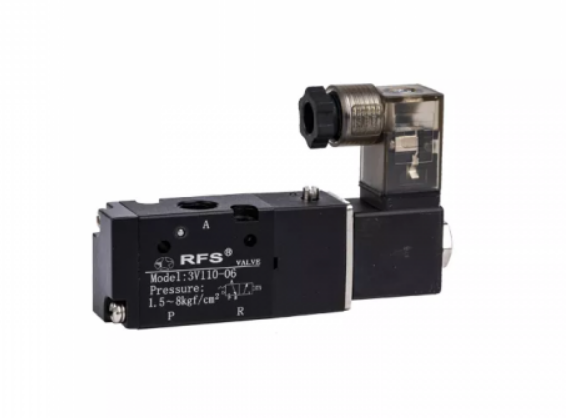What Are Directional Control Valves, And Why Do You Need One?
在任何液压系统中,方向控制阀是一个基本而重要的组件。正如名称所示,方向控制阀的作用是指引流体在系统中的流动。这些阀门决定了液体在系统内何时以及以何种方式流动,确保流体能够顺畅流动以完成各种任务。
方向控制阀用于控制液压流体在系统中的方向和运动。它们通常被称为切换阀,主要分为三种类型:液压止回阀、方向阀和阀盘阀,这构成了各种控制阀。
选择方向控制阀时需要考虑的因素
在分析方向控制阀的性能和适用性时,有五个主要因素需要考虑:
- 动态功率限制;
- 静态功率限制;
- 流体阻力;
- 切换时间;
- 漏油;
液压止回阀是什么及其用法
止回阀是液压系统中一种基础且广泛使用的方向控制阀。它们的主要功能是阻止液体在某一方向流动,同时允许其在相反方向上自由流动,这通常被称为不回流阀。
除了其主要功能,液压止回阀在液压系统中还可以发挥多种角色,例如:
1. 预填充阀以防止气蚀。
2. 旁路阀或回流过滤器。
3. 在一个方向上阻挡流动。
4. 通过在系统中生成背压来进行预紧。
5. 保护液压部件免受压力冲击。
大多数止回阀是弹簧加载的,并采用球阀或板阀机制来封闭单向流动。止回阀的设计确保了可靠的电路隔离,且没有泄漏风险。通过软密封的阀盘等多种元件可以在这些阀中应用,以有效地隔离电路。
什么是方向阀及其应用
方向控制阀由一根可移动的阀芯组合而成,这根阀芯设置在阀体内。当施加力时,控制阀芯移动,从而在阀体内连接或分离通道。这些阀具备多种特性,使其适合应用于不同条件,例如:
1. 因其简单性而具成本效益。
2. 对驱动力要求低。
3. 具备高切换功率。
4. 尽管持续存在油泄漏,但低损失。
5. 为操作员提供多种控制功能。
这些阀可以是直接操作或通过气动、液压等系统进行控制,连接电磁阀或机械手柄、滚轮。
方向阀盘阀是什么
这些 控制阀,通常称为插入阀,主要通过螺纹连接安装在外壳孔中,适用于最高达到1000巴的操作条件,可集成多种密封元件,如球体、阀盘和板。
其关键特性包括:
1. 无泄漏操作。
2. 延长且可靠的产品使用寿命。
3. 高最大工作能力。
4. 优秀的密封特性。
它们的设计使得这些阀在操作压力升高时,能够实现紧密密封。然而,与其他控制阀相比,其最大流量通常有限,因此不适合高流量要求的系统。
方向控制阀的工作原理
方向控制阀是根据其处理系统压力的能力来选择的,可以实现从完全开放到关闭或按比例的转换。这种转换可以瞬间发生,导致流体的快速加速和减速。在比例阀的情况下,通过调制来控制执行器的加速和减速,无论是手动或自动通过预设的周期。这些阀将流体保持在待机状态,防止其在系统内流动,直到需要为特定功能服务。
激活时,方向控制阀迅速切换以执行其指定的操作,并在完成后返回到中立位置。这种瞬时动作按需加速和减速流体。最简单的方向控制阀是 2路阀,能够阻止或允许流动。一个2路阀由两个端口组成——进水口和出水口。2路阀的类比可以是水龙头,展示了通过手动调整控流的简单性。
在选择方向控制阀时,设计者考虑两个主要特性:液体端口和位置数量。阀门端口充当液压流体流入或流出其他组件的通道,而位置数量则指示阀提供的不同流动路径,例如前进、中立或反转。
方向控制阀的选择指南
根据各种特性对方向控制阀进行分类,包括最大流量、最大额定工作压力、端口数量、位置数量、操作方式、流体路径、泄漏率等。以下是一些详细内容:
1. 最大流量/最大额定工作压力: 指的是阀门在执行工作时所需的最大压力。
2. 流体路径: 例如,2路2位阀(如止回阀),通过线路压力来启用,允许在一个方向上自由流动而在另一方面阻挡流动。旁通阀则是 3路2位阀的示例,通过两端口切换到一个共同回路。
3. 位置: 通常,阀门具有两个或三个位置——前进、中立、反向。
4. 端口: 流体进入和退出阀门的流动路径数量。
5. 操作: 指阀门的切换方式。
这些特性帮助定义方向控制阀在液压系统中特定的功能和应用。


Comments